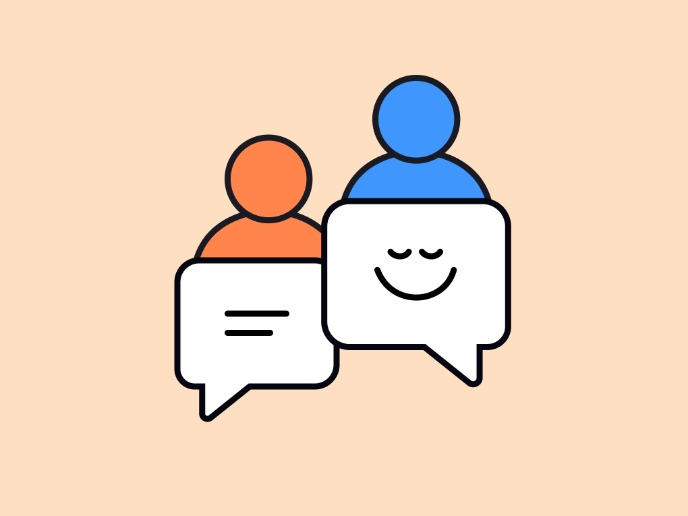How to Make the Most Out of ChatGPT for UX Writing: Part 1
Learn the different ways you can leverage ChatGPT for UX writing through effective prompt engineering
Let’s face it. The web is flooded with AI content today, and most of it is obviously AI-written. But a select few know how to use AI to write effectively, especially for UX, without making it look like they outsourced all their work to ChatGPT. You could be one of those people.
But first, it’s important to understand that using AI isn’t necessarily something that diminishes your value as a UX writer. When done right, AI can enhance your productivity, provide fresh ideas, and improve the quality of your content. It’s a tool that can streamline your processes, but your human touch is 100% essential to ensure the output is good enough for your users.
This tutorial will teach you how to make ChatGPT work for you through effective prompt engineering. We’ll explore various use cases of ChatGPT for UX writing, provide examples of effective prompts, and show you how to seamlessly integrate AI into your workflow.
UX Writing Use Cases of ChatGPT
Considering its current capabilities, let’s explore some practical use cases of ChatGPT in UX writing and how it can be integrated into your daily tasks.
- Writing microcopy: Generates multiple versions of microcopy (e.g., button labels, onboarding instructions, error messages, tooltips, notifications, alerts, labels, etc.) to maintain a consistent tone and style across the product.
- Developing user instructions and FAQs: Writes thorough and easy-to-understand user instructions and FAQs to help users navigate and utilize a product effectively.
- Enhancing voice and tone guides: Generates content that adheres to the brand’s voice and tone guidelines, providing examples to maintain consistency.
- Generating UX writing requirements: Anticipates and outlines UX writing needs, deliverables, and guidelines for projects, ensuring clarity and consistency.
- Identifying UX writing trends: Analyzes and summarizes current trends to keep content fresh and up-to-date.
- Translation for multilingual UX writing: Translates UX content into multiple languages and provides tips for localizing content for different cultural contexts.
The Limitations of ChatGPT
While ChatGPT is a powerful tool, it has some limitations. I’ve listed them below alongside a few strategies to address them (which we’ll explore in more detail in the upcoming sections):
Contextual understanding
ChatGPT may not always grasp the full context of a prompt, leading to irrelevant or off-target responses.
Workaround: Provide detailed context and background information in your prompts to guide the model more effectively.
Overly general responses
The model might generate responses that are too generic or not specific enough for your needs.
Workaround: Provide clear context, ask specific questions, use examples, set expectations, give feedback, and make direct requests for particular formatting or word limits.
Bias and inaccuracies
ChatGPT can produce biased or factually incorrect content due to the nature of its training data.
Workaround: Always review and fact-check the generated content. Use the model’s outputs as a starting point, and refine them as needed.
Lack of personalization:
The model does not have access to user-specific data unless explicitly provided in the prompt.
Workaround: Customize prompts with user-specific information to generate more personalized responses.
Repetitiveness
ChatGPT may repeat phrases or ideas within a response.
Workaround: Manually edit the outputs and use iterative prompts to generate varied responses.
Why You Should Care About Prompt Engineering
Now that we’ve discussed the potential limitations of ChatGPT and how to work around them, let’s delve into a crucial technique to maximize its effectiveness: prompt engineering.
What is Prompt Engineering?
Prompt engineering is the process of crafting specific and effective prompts to guide ChatGPT in generating the desired output. It involves carefully designing the input text to get accurate, relevant, and useful responses from the AI.
Prompt engineering is relevant to every single person who uses ChatGPT today because the quality of the output from ChatGPT depends heavily on the quality of the input prompt. A well-written prompt ensures that the AI understands the context and provides relevant responses.
Crafting Effective Prompts
Creating effective prompts is key to getting the best results from ChatGPT. Here are some essential strategies to do so:
1. Use clear and concise language
Clear and concise language helps ChatGPT understand your request accurately.
Here’s how to do it:
- Use straightforward language to get to the point.
- Unless necessary, steer clear of industry-specific terms that may confuse the AI.
- Long and complex prompts can lead to less accurate responses, so keep it as short as possible.
Example:
“Write a short and friendly purchase confirmation message for users who have just bought an item from our e-commerce app, including order details and next steps.”
2. Be specific about the desired output
Specific prompts yield specific answers. Clearly defining what you want helps in getting the exact output you need, ensuring the generated content is relevant and useful.
Tips:
- Specify if you need a list, paragraph, or bullet points.
- Mention any specific information that should be included.
- Indicate the desired tone (e.g., friendly, professional).
Example:
“Write a helpful and trustworthy notification message for our banking app users informing them that their password will expire soon. Include a headline, body text, and button CTAs.”
3. Provide necessary context
Providing context helps ChatGPT understand the background and the purpose of the content. This leads to more accurate and tailored responses that fit the specific needs of your project.
Tips:
- Describe the situation or use case.
- Specify who will read or use the content.
- Clarify what the content is meant to achieve.
Example:
Instead of, “Write a good 404 error message,” try, “Write a friendly 404 error message for our e-commerce website that directs users back to the homepage or helps them find what they were looking for.”
4. Utilize placeholders and variables for dynamic responses
Using placeholders and variables allows you to create flexible templates that can be reused with different data, making your prompts more versatile and efficient.
Example:
Instead of, “Create a video streaming app subscription confirmation message,” try, “Write a video streaming app subscription confirmation message on the confirmation screen after payment to thank {user_name} for subscribing to {service_name}, for {subscription_period}. Inform them that they can cancel anytime in their account settings.”
5. Iterative prompt refinement
Did you know you could use ChatGPT itself to come up with the most effective prompts? It essentially involves creating an iterative prompting environment, in which ChatGPT asks you for a prompt, provides suggestions on how to improve the prompt, and, at some future point, executes the iterated and improved prompt.
Here’s an example of a template you can use for iterative prompting:
“I want you to be my Prompt Creator. Your goal is to help me craft the best possible prompt for my needs. The prompt will be used by you, ChatGPT. Here’s the process:
1. Initial Input: Your first response will ask me what the prompt should be about. I will provide my answer, and we will refine it through iterative steps.
2. Refinement Process: Based on my input, you will generate 3 sections:
a) Revised Prompt: Provide a rewritten version of my prompt. It should be clear, concise, and easily understood.
b) Suggestions: Offer suggestions on what details to include to improve the prompt.
c) Questions: Ask relevant questions to gather additional information needed to enhance the prompt.
3. Iterative Improvement: We will continue this process, with me providing more information and you updating the prompt in the Revised Prompt section until it’s perfect.”
6. Ask for help summarizing research insights and UX writing decisions
Explaining your UX writing decisions helps maintain consistency and ensures that all team members, including developers and other stakeholders, understand the rationale behind those decisions. You can leverage ChatGPT to help you summarize insights from user research and the decisions that followed from these insights.
Begin by explaining the insights to ChatGPT and asking for a clear summary.
Example:
“Based on our user research findings listed below, we found that users prefer a more empathetic tone in error messages. Can you provide a summary of these insights and explain how they informed our decision to change the tone of our error messages?”
🧠 Pro Tip: To learn more about how to leverage AI in your design workflows, take up Uxcel’s AI in UX/UI Design course.
P.S. This tutorial is a by-product of both the author’s and ChatGPT’s contributions, a perfect example of human-AI teamwork making the dream work!
You might also like

Communicating Across Teams

Mastering Prompt Engineering: Techniques for Getting the Most Out of AI

Writing Tips for UX Designers
Popular Courses

UX Writing

Building Content Design Systems












